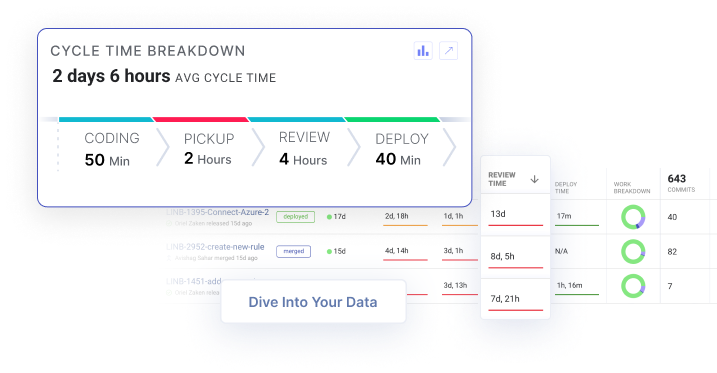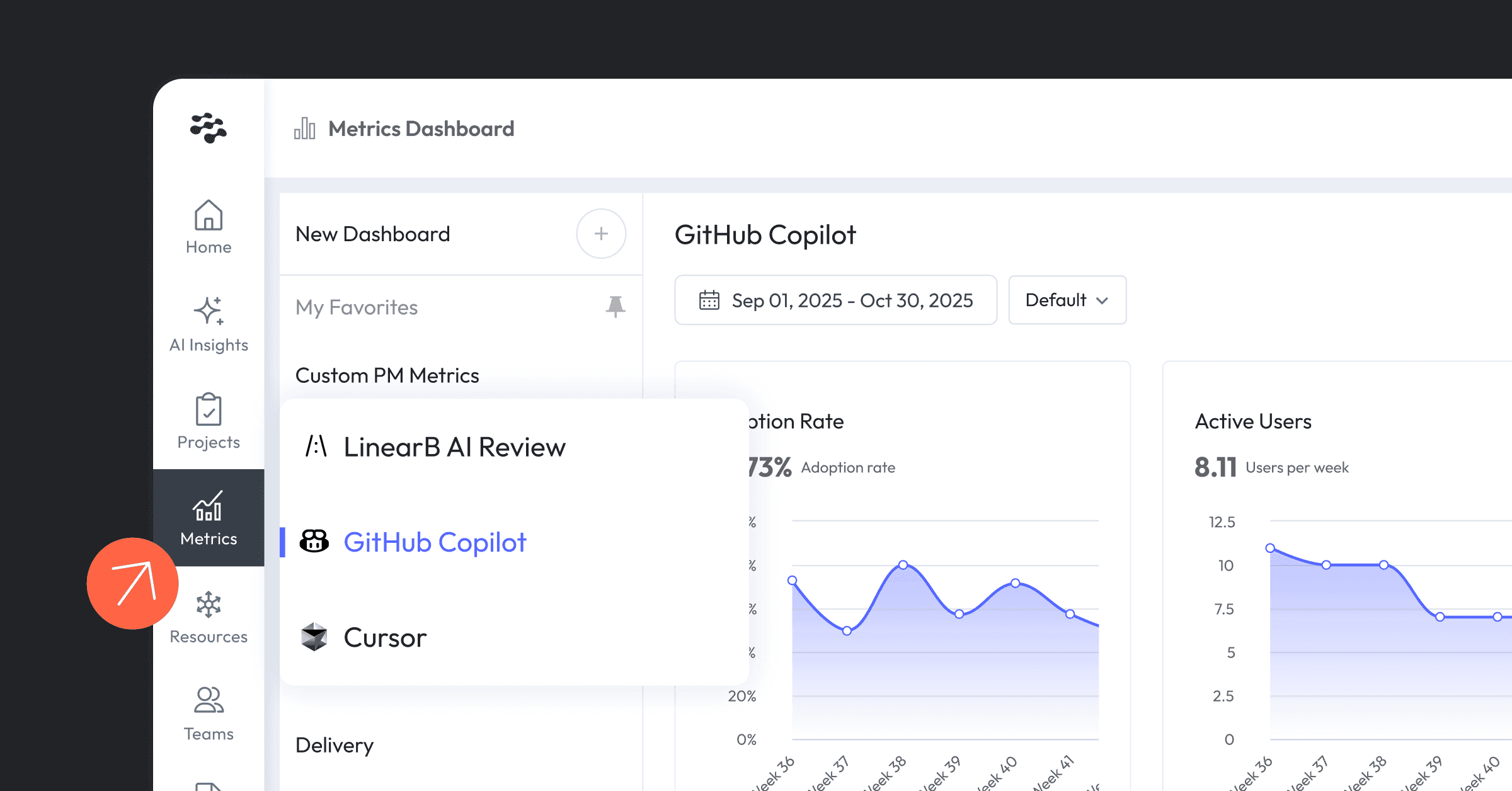Your executives want that new feature as soon as possible — ideally yesterday.
Instead, you have to tell them it’s behind schedule. Worse yet, you don’t quite understand why. The designs and specifications looked good. The work was broken out and distributed to the right teams. Your team leads assure you the new feature was prioritized.
So what happened?
In this article, we’ll look at how value stream mapping software can help you understand where your resources are going and identify bottlenecks, so you can start consistently delivering on your promises.
Table of Contents
- What Is Value Stream Mapping?
- Why Is Value Stream Mapping Important?
- 5 Best Value Stream Mapping Tools
- Unlock The Engineering Department’s Full Potential
What Is Value Stream Mapping?
Value stream mapping (VSM) was initially devised as a method to help manufacturing companies minimize their production and changeover times. This would enable them to optimize their production process, be more responsive to customer demand, and get a new product or service to market faster.
Sound familiar? VSM is pretty close to how Agile development works, and they complement each other well.
But VSM focuses on how the code flows through your team’s software development lifecycle instead of prioritizing new features.
A VSM tool identifies the key steps in your product development process and shows you how long each step takes as well as how many resources each step takes up.
Why Is Value Stream Mapping Important?
Software development easily gets complex. You’re already responsible for orchestrating all your engineering leaders and dev teams. But then issues like downtime, bugs, decreases in productivity, or global pandemics happen. And you’re stuck in the middle, staring at your roadmap, wondering where to go from there.

Source: Giphy
Value stream mapping filters out all the noise and clearly shows you where your teams’ resources are going. All of a sudden, the fog clears, and you can spot bottlenecks! You can finally see efficient and inefficient parts of your process. You can understand why you’re not delivering on time — and what changes you need to make.
5 Best Value Stream Mapping Tools
VSM software generally falls into two categories: Manual and automated. We’ll be showing you tools from both.
Manual Value Stream Mapping Software
The manual category consists of generic process mapping tools that help you create diagrams for many different kinds of processes and information flows. They can also help you with other things, like creating a timeline. You can even adapt them to create a value stream map.
1. Lucidchart
Lucidchart is a super common VSM tool, especially among tech companies. It’s most often used to diagram system architectures, and data flows, but they have some value stream map templates. Because Lucidchart is widely popular, you can integrate them with tools you already use, like Google Drive and Notion. That makes them easy to share with your engineering leaders and other execs.
2. Visio
Sometimes it feels like every time you have to do a new thing, you have to pay for a new subscription. But that’s what makes Visio great — it’s a Microsoft product that often gets bundled with other software packages like Microsoft 365.
Visio also plays nicely with other Microsoft ecosystem products, like Teams. And like the other value stream tools, Visio has pre-built value stream mapping symbols and process boxes.
3. SmartDraw
SmartDraw is a streamlined tool for creating flow charts, and technically speaking, value stream mapping falls under that umbrella. It breaks your value stream into three parts: a process map, a timeline, and an information flow. Each of these allows you to visualize how your resources are being used.
SmartDraw is also optimized to make diagrams look nice, so it’s great if you have to share your diagrams with external stakeholders. The tool can also integrate with your existing software for other reports, so that’s awesome.
4. Creately
Creately boasts customers like Netflix, Amazon, and even freakin’ NASA. Their platform has a ton of features like intelligent drag and drop and automated sizing that make for a delightful user experience. Multiple people can collaborate on a board all at once, and it allows you to create more detailed maps that include documents and links. If all that wasn’t great enough, Creately integrates with popular communication tools like Slack, so you can use it practically anywhere.
Automated Value Stream Mapping Software
Automated tools will generate insights — you guessed it — automatically! Typically, you feed in your process data and let the tool run its analysis. When picking an automated solution, it’s important to ensure the VSM tool works well with your use case. Otherwise, the insights you get won’t be useful.
5. LinearB
LinearB offers a powerful workflow optimization platform that helps you with value stream mapping. We take a look at your existing workflow and help you visualize any bottlenecks in your processes — and then we help you actually fix them.
Because it’s all automated, you save time doing it too. Our cycle time metric shows you the lead time of each stage of the development process in real-time. And with just one click, you can see which individual issues are causing you slowdowns and blocks.

Our Project Delivery Tracker enables you to bridge the gap between engineering work and revenue. PDT correlates where your teams are investing their time with the larger business goals, so it gives you the data you need to communicate to the rest of the business the value your teams are delivering.
We also give you the tools to truly improve your processes. You can use our groundbreaking engineering benchmarks with our Team Goals to set realistic goals and customizable working agreements in collaboration with your team leaders and developers.
You can then empower your team members to reach those goals with our WorkerB bot, which will streamline their code review process. WorkerB helps them see PR context right in Slack and MS Teams. They can even review PRs that are 5 lines or smaller without even leaving those platforms.
With this automation, you can optimize your PR processes — and that’s very important because half of pull requests are idle for 50% of their lifespan. Shortening the PR lifecycle increases merge frequency and significantly decreases overall cycle time.

Unlock The Engineering Department’s Full Potential
By mapping out how work is done, and value is created, you can understand how your organization actually creates and ships features. Value stream mapping software can help you see bottlenecks and other inefficiencies. When you understand where your problems originate, you’ll be able to take action that will move the needle and boost your engineering org’s overall output.
When you use an automated VSM tool like LinearB, you get a dynamic portrait of where your resources are going and how that lines up with the broader business goals. With LinearB, you can move beyond simply a static value map and into true value stream management.





